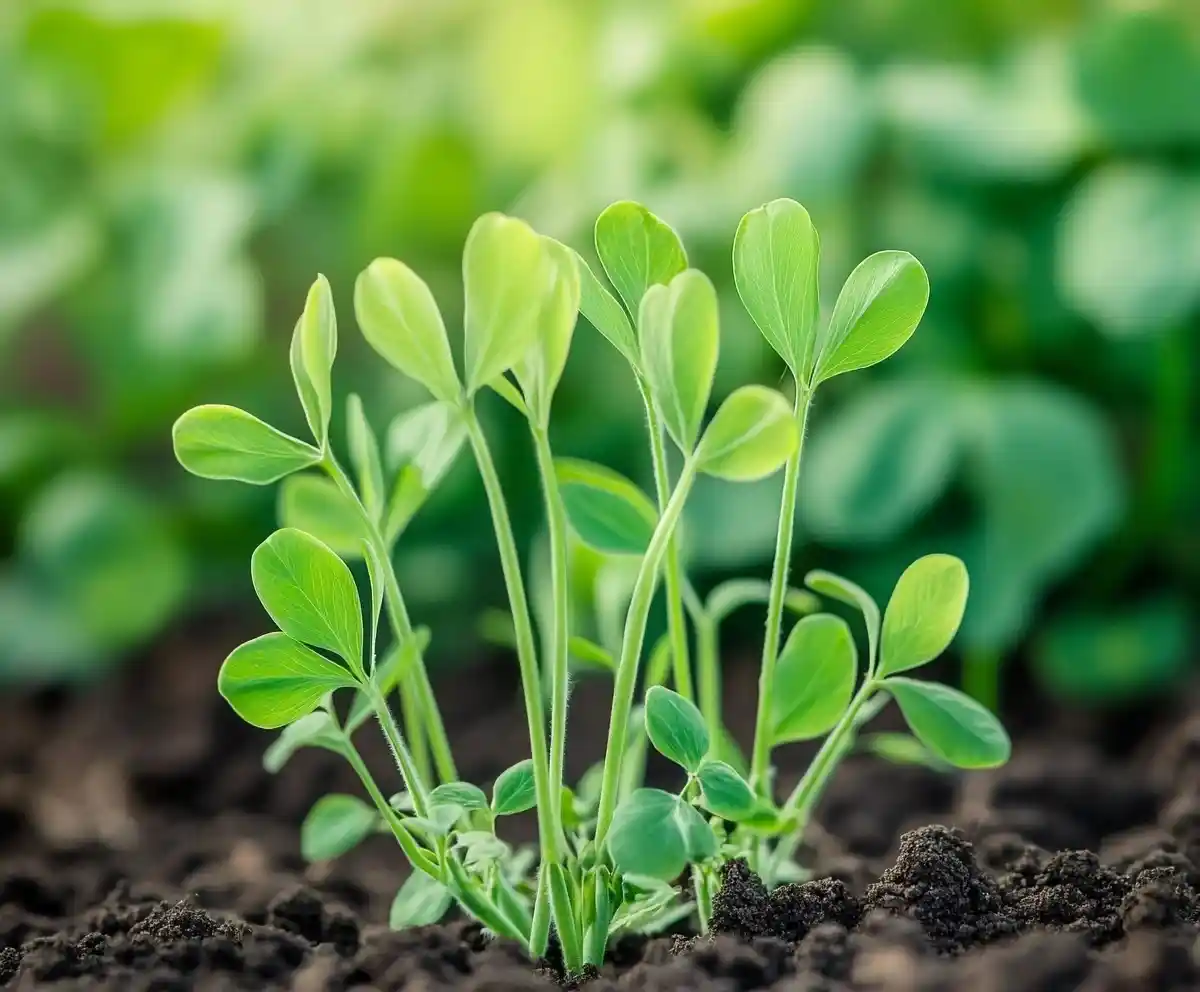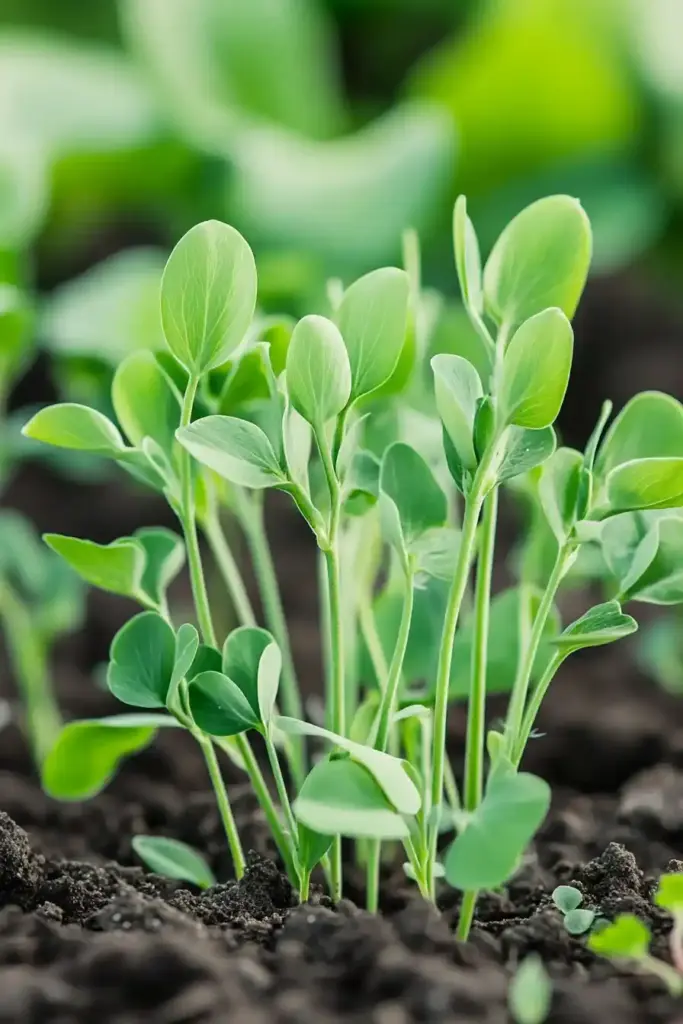If you’re dreaming of juicy sugar snaps or fragrant sweet peas climbing gracefully through your garden, there’s one simple tool that can take your harvest to the next level: a DIY pea trellis. Supporting your pea plants not only keeps your garden tidy, but it also boosts plant health, reduces pests, and makes harvesting a breeze.
Whether you’re working with a raised bed, balcony container, or backyard row, there’s a pea trellis idea here for you. This guide covers everything from plant basics to seven stylish and functional DIY trellis designs—all easy to build, beginner-friendly, and tailored for better yields.
🌿 How Do Peas Grow?
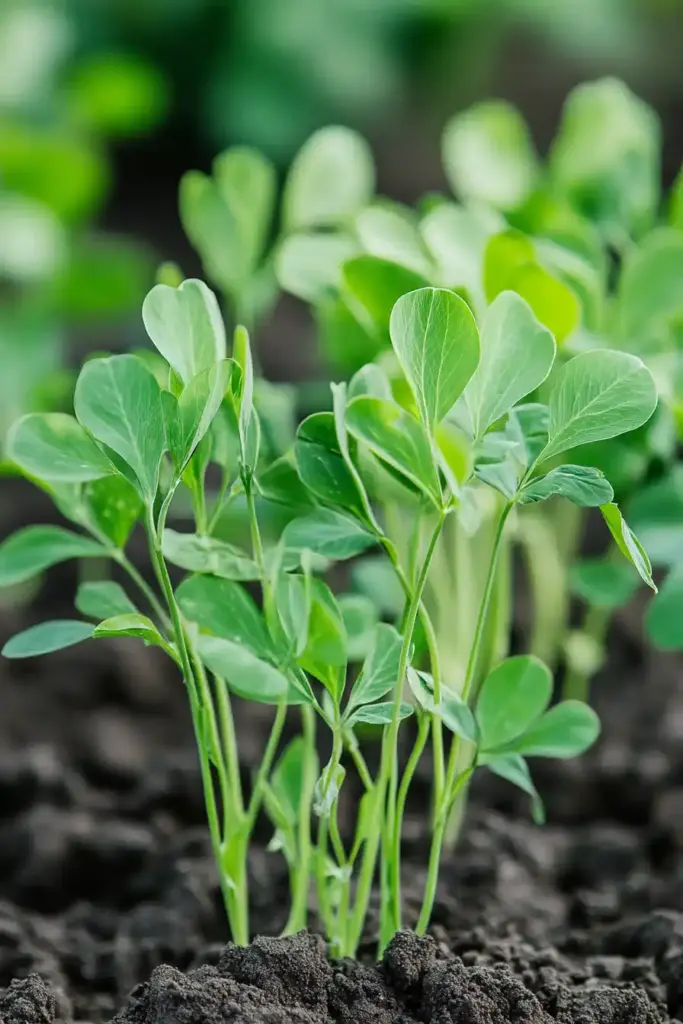
Before building your trellis, it helps to know how peas grow. Peas are cool-weather crops that thrive in early spring. They’re usually direct-sown into the soil once it’s thawed and workable, and prefer full sun and fertile, well-drained earth.
There are two main growth habits to consider when choosing your trellis type:
- Bush peas stay compact, typically reaching 18 inches to 3 feet tall. These need minimal support—perfect for small or windy gardens.
- Vining peas, like Sugar Snap or Sweet Peas, can stretch up to 6 feet or more and definitely need a sturdy vertical structure to climb.
Choose your trellis based on the plant’s mature height, and you’ll set your peas up for strong, healthy growth.
🫘 Types of Peas: Know What You’re Growing
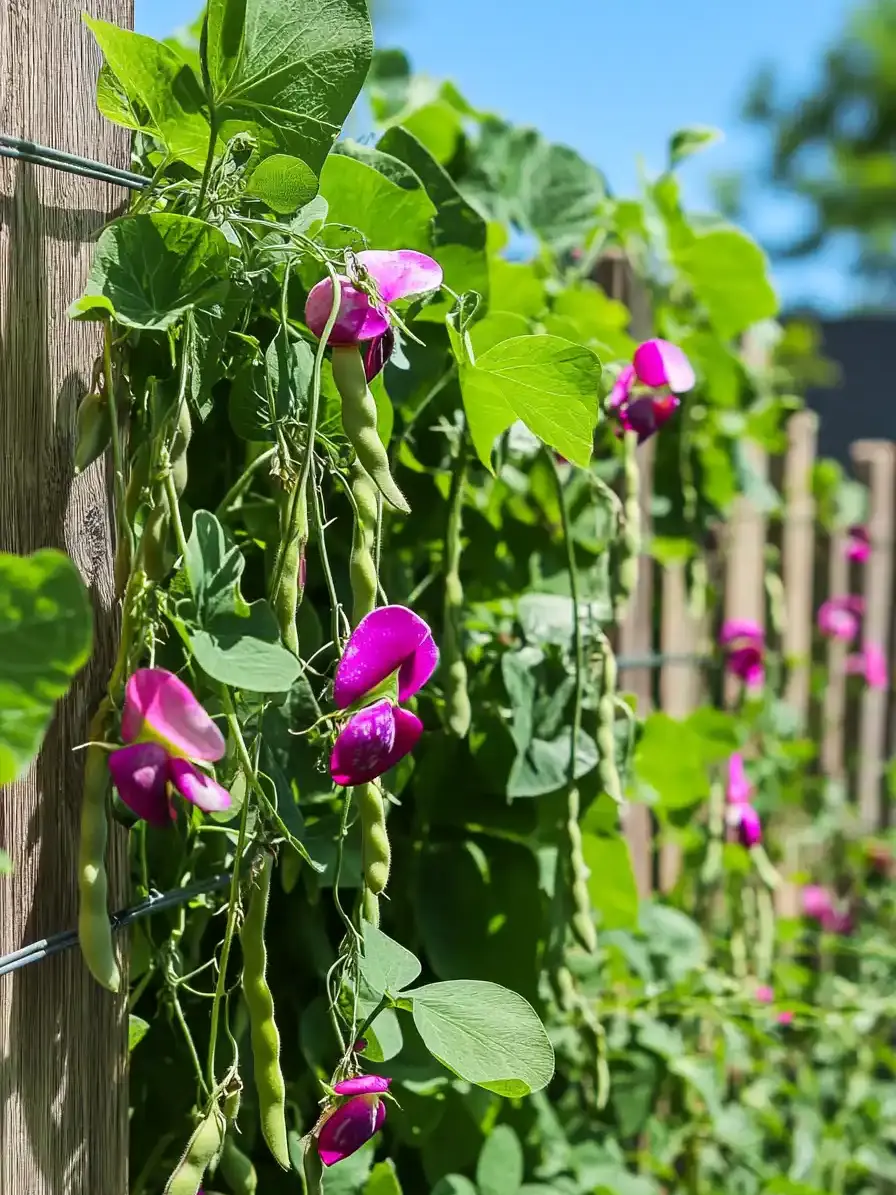
Not all peas are created equal, and the kind you grow will determine the best support system. Here’s a breakdown of the most common types of peas you might be planting:
1. Shell Peas (aka Garden Peas)
These are the classic green peas you shell before eating. The pods are not typically consumed, but the sweet peas inside are perfect for fresh snacking or cooking. Shell peas usually need a moderate trellis, especially if you’re growing taller varieties.
2. Snow Peas
Famous for their flat, edible pods, snow peas are a garden favorite for stir-fries and salads. These plants can get leggy and benefit from vertical support to keep the pods clean and within reach.
3. Snap Peas (aka Sugar Snap Peas)
A hybrid between shell and snow peas, snap peas produce plump, juicy pods that you eat whole. They’re vigorous growers—some varieties top 6 feet—so they need a strong, tall trellis to prevent them from flopping.
4. Sweet Peas
Unlike edible peas, sweet peas are grown for their stunning, fragrant blooms. While not edible (in fact, they’re toxic), they make excellent cut flowers and love to climb. If you’re planting sweet peas, think decorative trellis: arches, tunnels, or A-frames look gorgeous while supporting their growth.
👉 Tip: Always check the seed packet or catalog for growth habits (bush vs. vining) and match your trellis accordingly.
🌾 Why You Should Use a DIY Pea Trellis
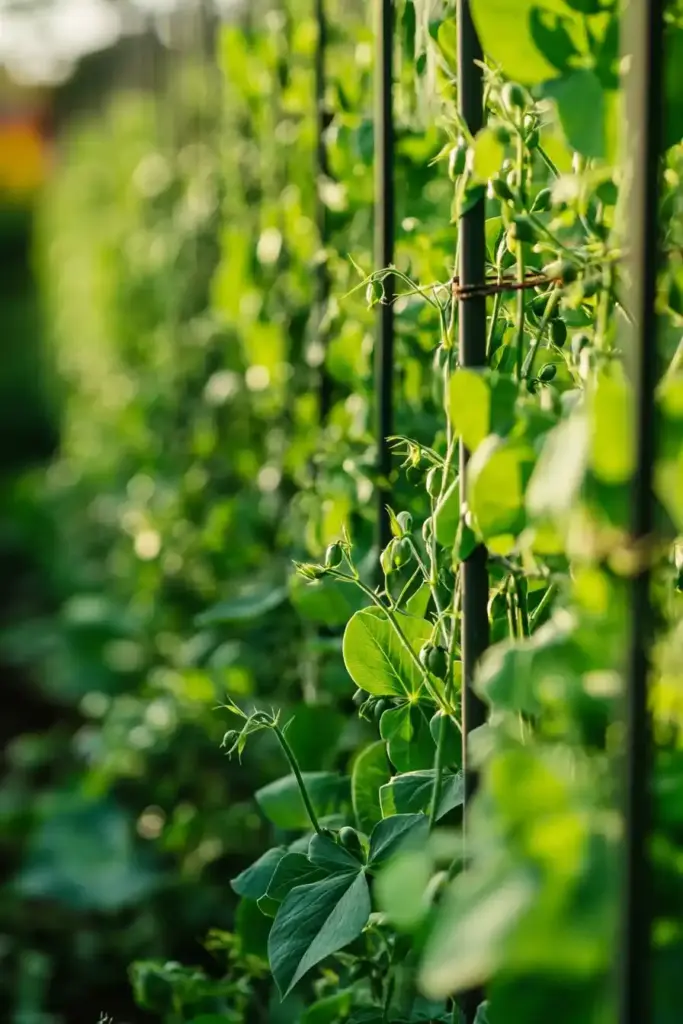
Trellising isn’t just for looks—it’s a game-changer for healthier plants and bigger harvests. Here’s why a DIY pea trellis is a must for your garden:
✅ Healthier Plants
Lifting pea vines off the ground improves air circulation, which helps prevent common fungal issues like powdery mildew. Better airflow = fewer diseases = happier peas.
🐜 Pest Protection
When your peas are sprawled on the soil, they’re a buffet for slugs and other ground-dwelling pests. Vertical growth makes it harder for critters to reach your tender vines and pods.
👀 Easier Harvesting
Dense, floppy pea plants can hide ripening pods. A trellis gives you clear visibility, making it easier to pick pods at their peak—and avoid leaving overripe ones that slow new production.
🌱 Better Yield
Trellised plants can dedicate more energy to growing upward and producing pods rather than sprawling out and shading themselves. More sun exposure = more growth.
🎨 Garden Aesthetics
Let’s be honest—a tidy vertical trellis loaded with green vines or colorful blooms is garden eye-candy. Whether it’s a bamboo teepee or a rustic twig support, a DIY trellis adds charm to any growing space.
🧰 How to Choose the Best DIY Pea Trellis: 4 Key Considerations
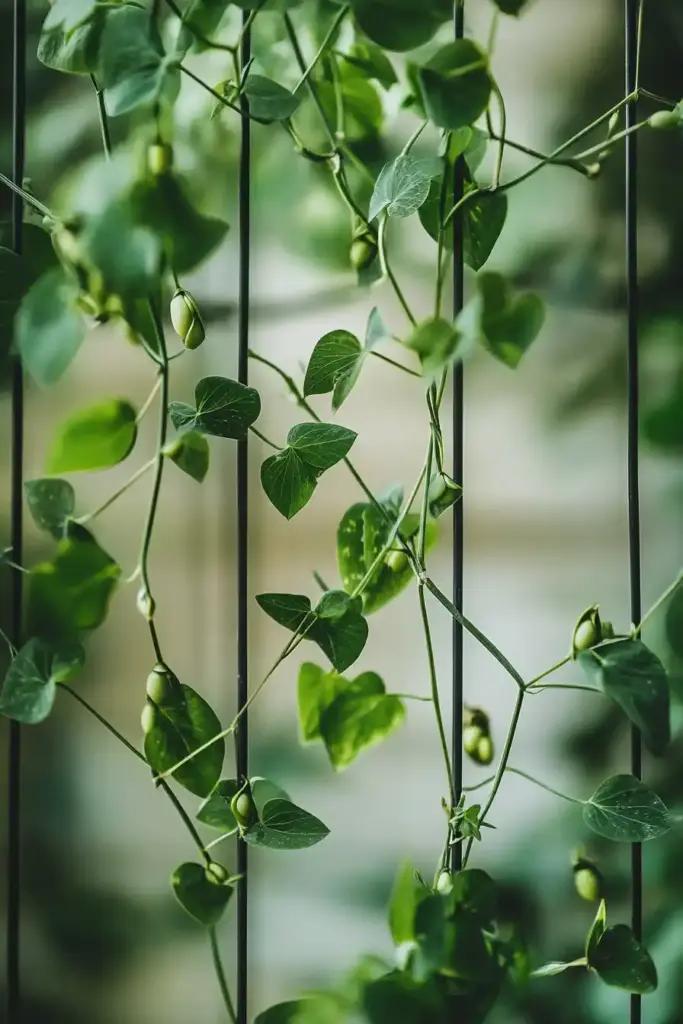
Before diving into tools and twine, take a moment to plan. The best pea trellis for your garden depends on more than just style—it’s about space, strength, and your own DIY vibe. Here are four factors to help guide your decision:
1️⃣ Garden Space
Ask yourself: Where are you growing your peas?
- Narrow beds or rows? Go for slim, upright trellises like posts with netting or wire panels.
- Raised beds or larger garden plots? Try a tunnel, teepee, or A-frame to maximize vertical space and airflow.
- Containers or small spaces? Compact trellises like mini cages or twig structures are ideal for balcony gardening or patio setups.
2️⃣ Mature Plant Size
Pea plants come in all heights—know what you’re planting.
- Dwarf or bush peas only need a light structure, like short stakes or twig supports.
- Tall vining types (like Sugar Snap or Sweet Peas) require something sturdier—at least 5 to 6 feet tall and well-anchored.
👉 If your peas outgrow the trellis, they’ll flop over, risking damage and reduced yields.
3️⃣ Exposure & Weather
Is your garden exposed to high winds or heavy rain?
- In breezy or storm-prone areas, skip flimsy trellises.
- Opt for sturdy A-frames, cattle panels, or reinforced tunnels to avoid mid-season collapses.
Bonus: Strong trellises can be reused for beans, cucumbers, and other climbers too.
4️⃣ Your DIY Skill Level
Not everyone wants to build a carpentry masterpiece—and that’s totally okay.
- Beginner? Go simple with bamboo poles and twine or recycled tomato cages.
- Experienced builder? Try more durable setups like a framed wire panel, tunnel, or custom A-frame trellis.
Remember: It doesn’t have to be fancy to be effective. Peas aren’t picky—they just need something to grab onto.
🪵 Common Materials for a DIY Pea Trellis
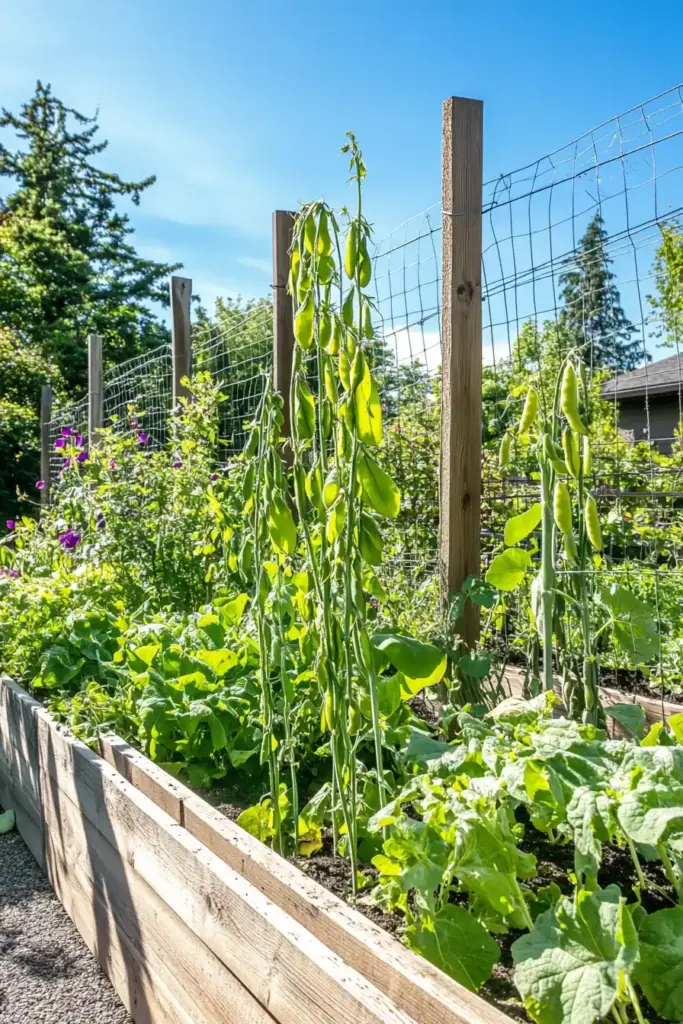
You don’t need a fancy kit to build an effective pea trellis. With a few simple supplies—many of them recycled or repurposed—you can create a strong support system that fits your garden’s needs and aesthetic. Here’s what to consider:
🏗️ Support Structures (Vertical Elements)
These are the bones of your trellis. You’ll need upright elements to anchor everything in place:
- Bamboo poles – Lightweight, strong, and easy to find
- Wooden stakes or saplings – Great for rustic, natural builds
- PVC pipe – Affordable and weather-resistant
- Metal or plastic garden stakes
- Recycled materials – Think old tomato cages, umbrella frames, or even ladders
🧵 Climbing Materials (What the Peas Grab Onto)
Peas climb by twining their tendrils, so give them something to hold:
- Jute or garden twine – Biodegradable and budget-friendly
- Nylon netting or garden mesh – Ideal for taller or denser plantings
- Plastic netting – Durable and reusable year after year
- Chicken wire or fencing panels – Perfect for heavy-duty support
🔁 Hardware & Tools
You’ll likely need a few accessories to pull it all together:
- Zip ties or cable ties – Fast and easy way to attach netting to stakes
- Screws or nails – For wooden frame builds
- Garden staples – To anchor netting into the ground
- String or rope – To lash poles together or provide extra support
💡 Pro Tip:
Before buying anything new, check your shed or garage—you might already have everything you need. Repurposing materials is not only sustainable but gives your garden a creative, custom touch.
🛠️ 7 Easy DIY Pea Trellis Ideas
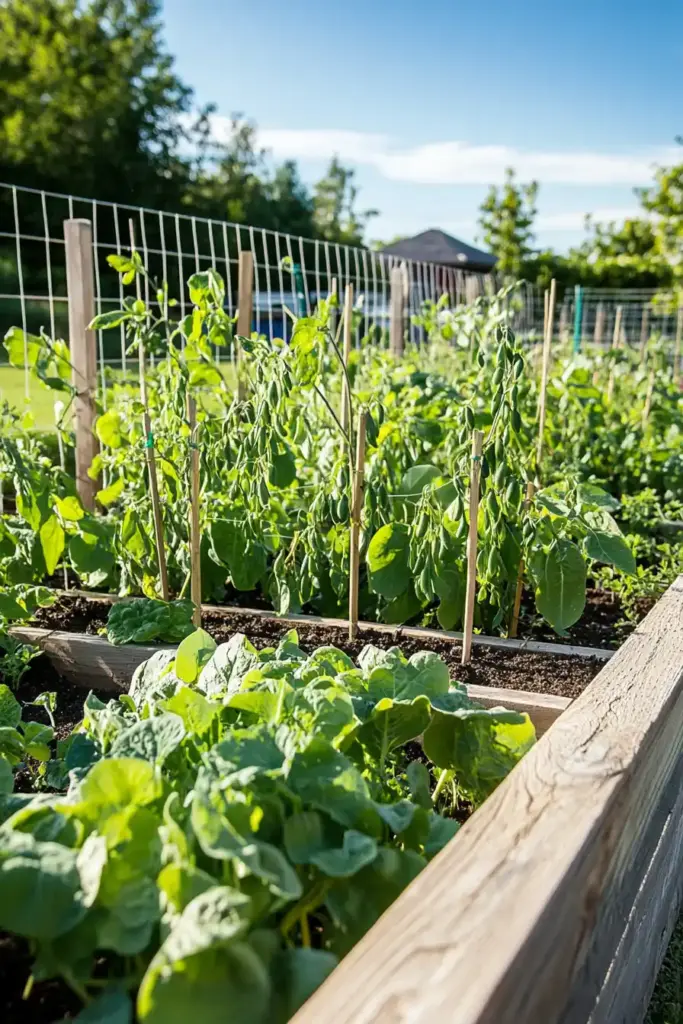
Whether you’re working with a small garden bed or a full backyard plot, there’s a perfect trellis idea for you here. Each option is low-cost, easy to build, and optimized for healthy pea growth.
1. Bamboo Teepee Trellis
Best for: Raised beds, garden corners, or decorative plantings
Difficulty: Easy
Use 5–6 bamboo poles (or sturdy saplings), lash them together at the top with jute twine, and spread the base into a cone shape. Weave more twine between the poles to create a ladder for vines to climb.
Why it works: It’s stable, charming, and gives peas plenty of surface to grow. Bonus: You can plant in a circle around the base for full coverage.
2. Post and Netting Trellis
Best for: Row gardens or narrow spaces
Difficulty: Beginner-friendly
Sink tall wooden or plastic stakes 4 feet apart and stretch nylon garden netting between them. Secure with zip ties.
Why it works: Simple, quick to set up, and effective for both bush and vining peas. Ideal for gardeners on a tight schedule.
3. Wire Panel Trellis
Best for: Raised beds, heavy crops, or windy locations
Difficulty: Moderate
Attach wire fencing panels or cattle panels to upright wooden posts using screws or ties. Great for permanent setups.
Why it works: It’s super strong, supports tall plants easily, and can be reused every season. Also excellent for sweet peas and climbing flowers.
4. Garden Arch or Tunnel
Best for: Large raised beds or decorative gardens
Difficulty: Intermediate
Bend two long wire panels (like cattle panels) between beds to form an arch. Secure the bases with wood strapping or stakes.
Why it works: This show-stopper is functional and beautiful. It adds vertical interest and lets you walk underneath while harvesting.
5. Twig or Branch Trellis
Best for: Rustic gardens or eco-conscious growers
Difficulty: Easy
Collect long, twiggy branches and insert them into the soil vertically or at an angle. Sow pea seeds at their base.
Why it works: Totally natural, biodegradable, and free if you have a wooded area nearby. Great for bush peas and compact varieties.
6. A-Frame Trellis
Best for: Windy gardens or small spaces
Difficulty: Moderate to Advanced
Construct two rectangular wood frames and hinge them together at the top. Stretch twine, wire, or netting across each side.
Why it works: It’s strong, foldable, and creates space underneath for shade-tolerant crops like lettuce or spinach.
7. Recycled Trellis
Best for: Budget-friendly gardens or creative DIYers
Difficulty: Easy
Repurpose materials like tomato cages, old ladders, wire shelves, or even the frame of a broken patio umbrella.
Why it works: You’re keeping items out of landfills and giving them a second life—plus, it adds a fun, quirky vibe to your garden.
🌼 Final Thoughts: Grow Up with a DIY Pea Trellis
Supporting your peas with a DIY trellis isn’t just smart gardening—it’s the secret to healthier plants, easier harvesting, and a tidier, more productive garden space. Whether you go rustic with twigs or all-in with a cattle panel tunnel, there’s a trellis option to match your garden’s vibe and your skill level.
So get creative, use what you have, and let those vines climb! Your peas—and your future self at harvest time—will thank you.

